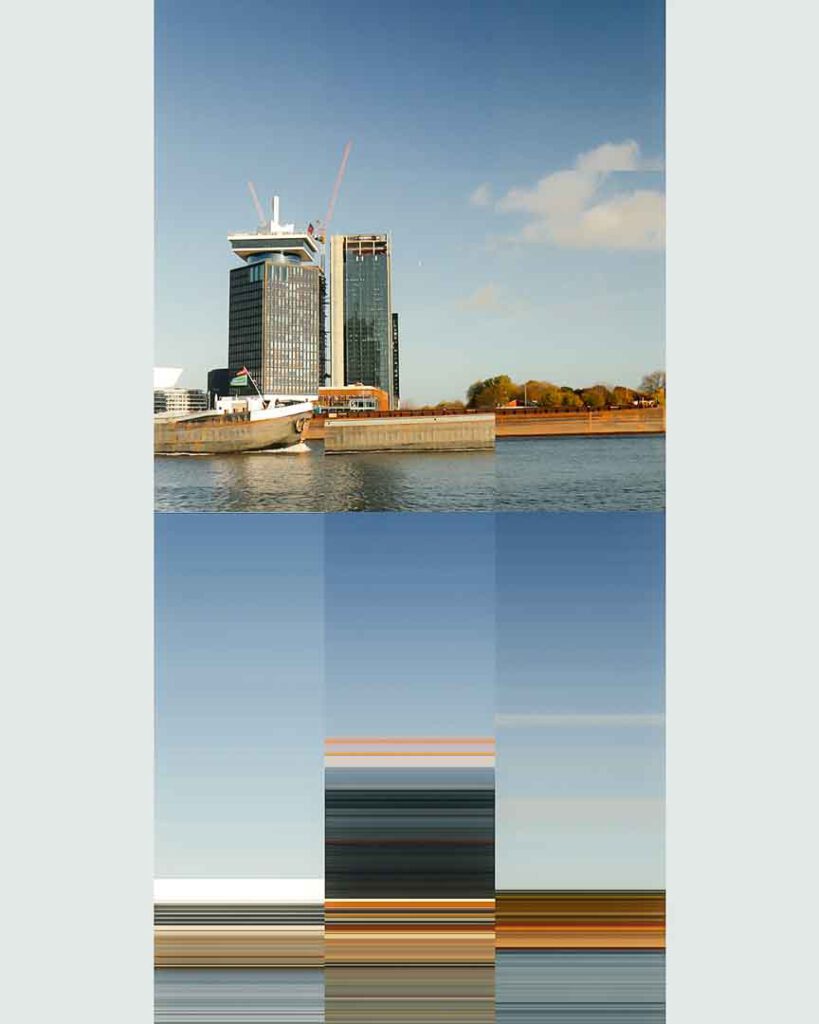In this next stage of our exploration, we pushed the boundaries of our work with the iconic Adam Tower in Amsterdam by experimenting with pixel manipulation. Drawing inspiration from online examples of pixel-based art, we used the single pixel selector tool in Photoshop to create a new layer of abstraction. By selecting a single row of pixels-either horizontally or vertically-from our reconstructed images, we extended these lines across the canvas, resulting in streaks of colour and texture.
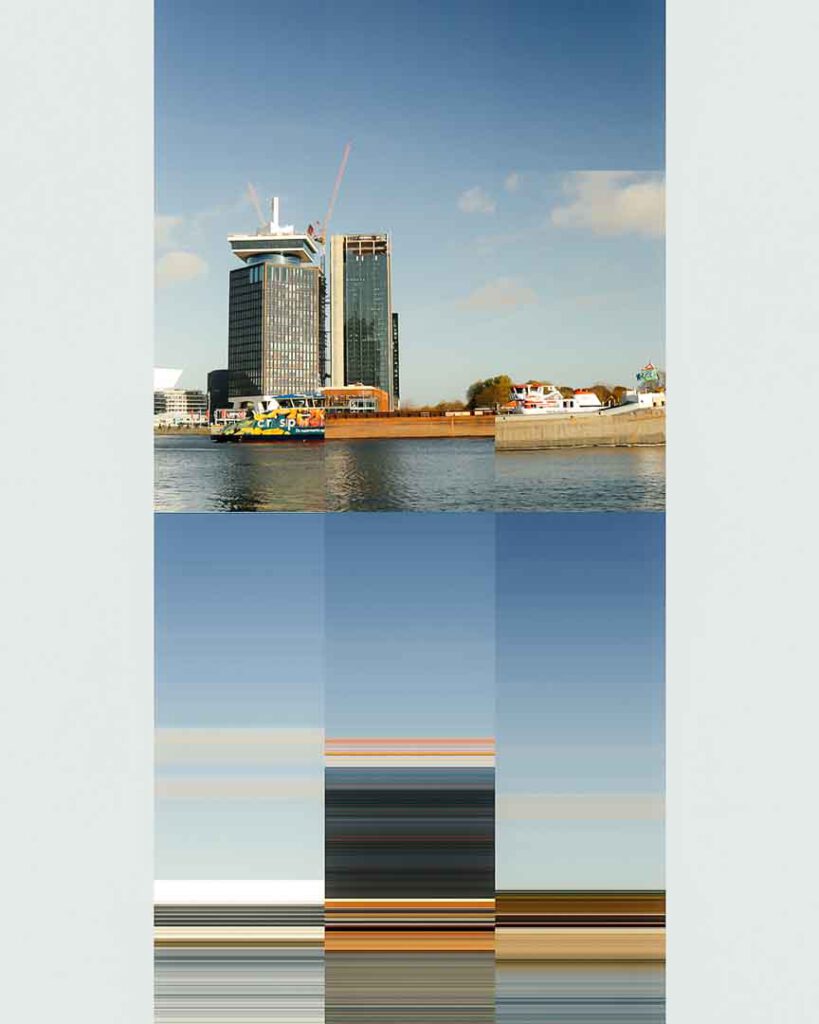
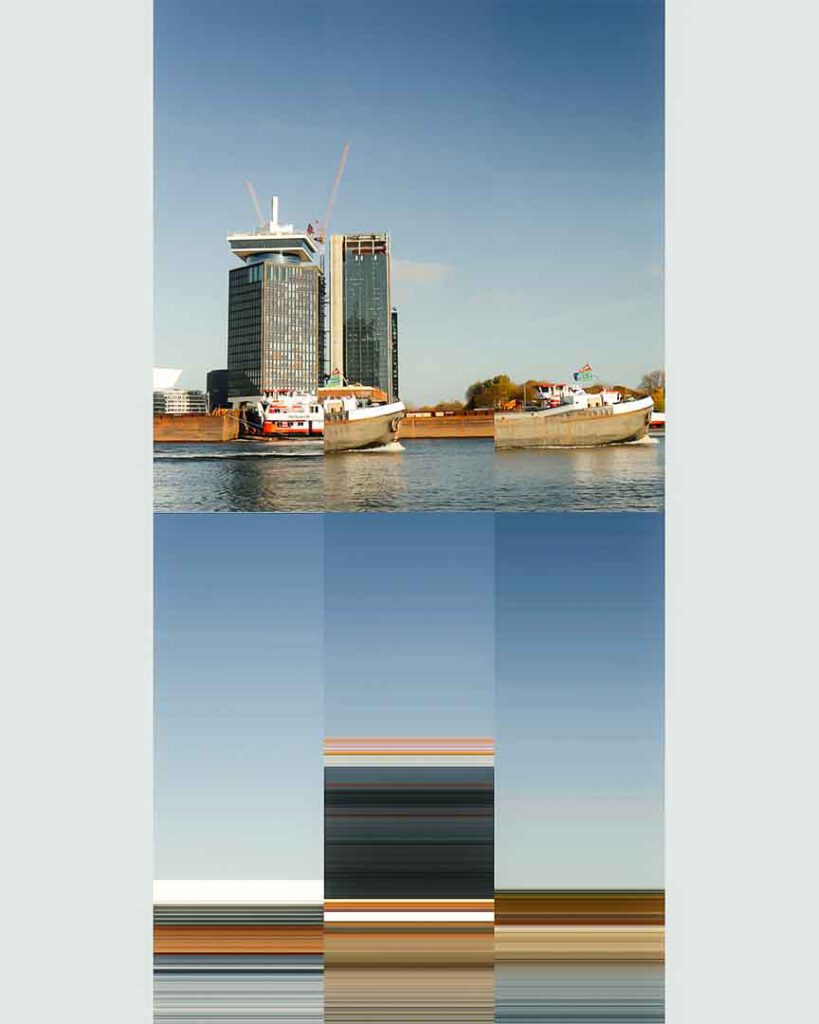
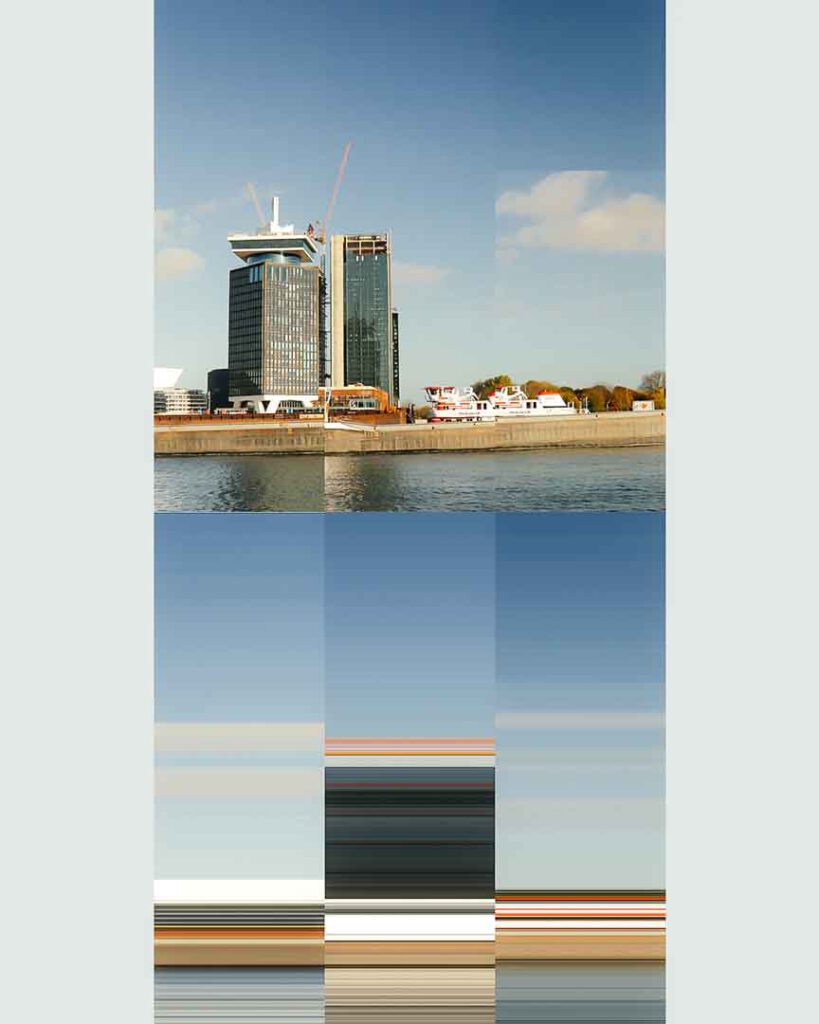
This technique mimics the effects often seen in time-lapse photography, where long exposure times cause movement to blur into continuous streaks across the frame. However, unlike traditional time-lapse, where the passage of time is responsible for this distortion, our approach was purely digital. We expanded pixel rows from images captured at different moments in time and combined them into a single image, allowing us to visually “compress” time without distorting it.
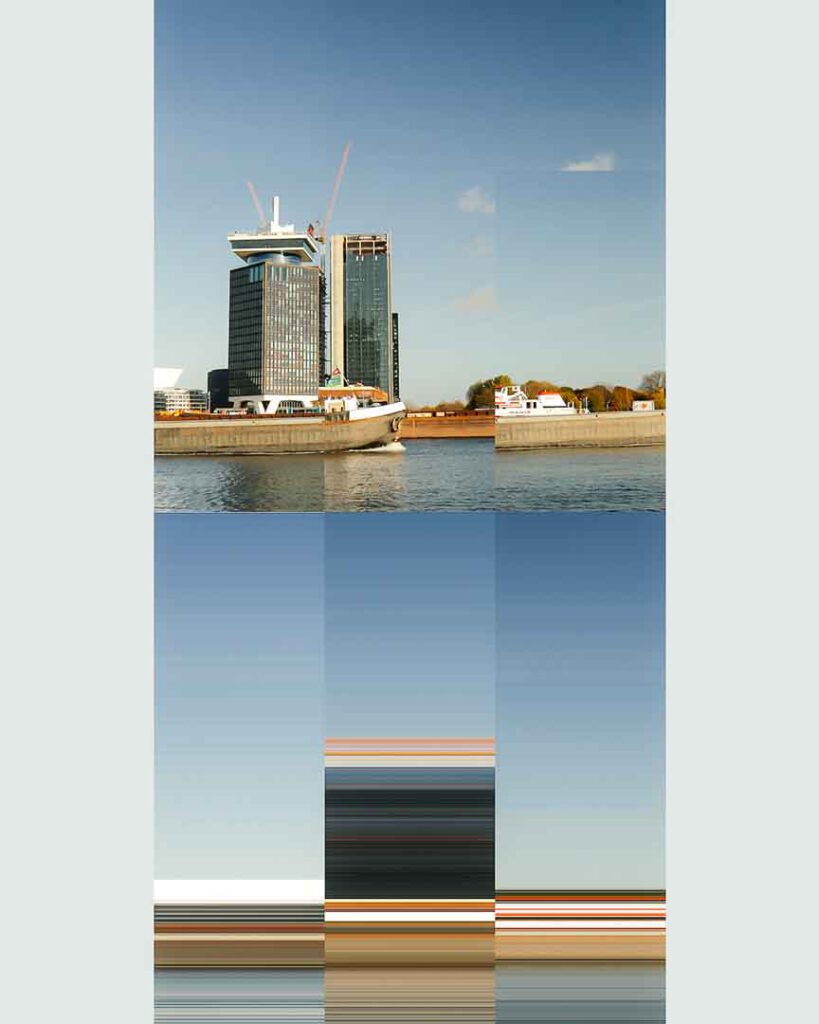
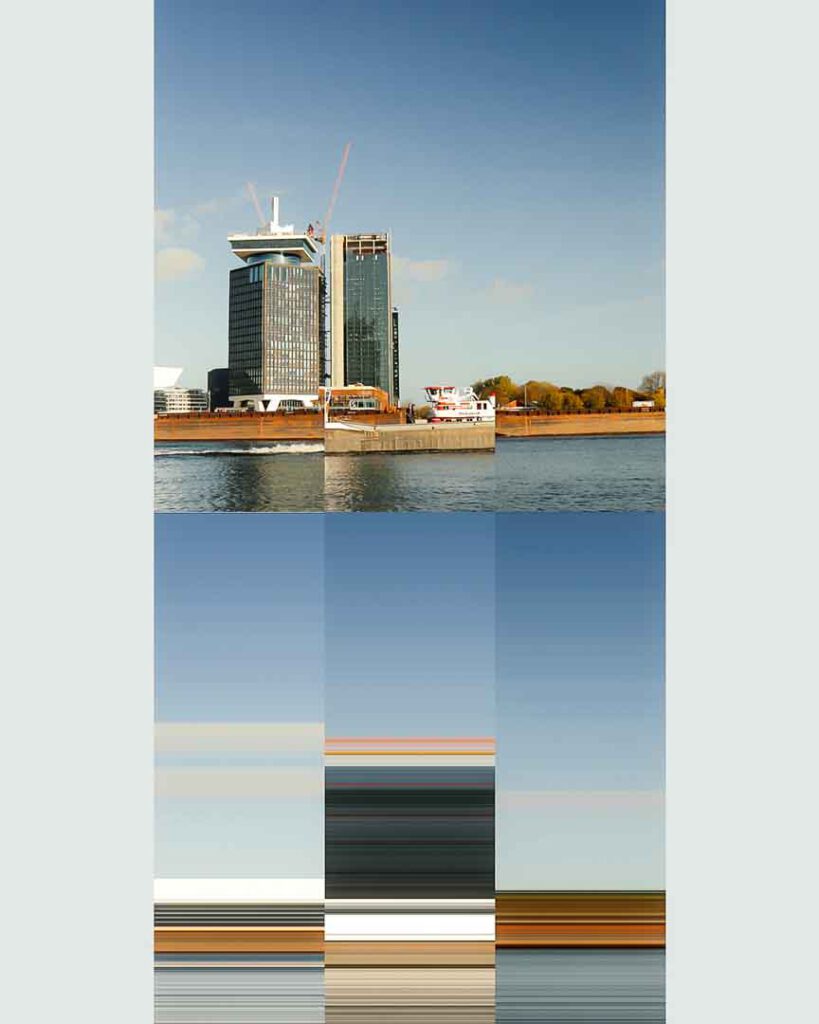
In essence, the pixel streaks represent a shift in how we experience movement and stillness. Rather than allowing time to naturally stretch the image, we digitally manipulated it, playing with the visual echoes of time lapse. The result is an intriguing combination of rigid structure and fluidity, but as the work evolved, we found that this purely digital manipulation became detached from the organic nature of our previous experiments. The abstract play of colouurs and lines, while striking, felt too far removed from the deeper exploration of perception and experience we were pursuing.
While this project helped us understand new ways of working with digital tools, the outcome-by all intents and purposes-leaned too heavily into the digital, leaving behind the essence of blending motion and stillness that had grounded our earlier work. As a result, while we value the learning experience, this phase marks the end of our experimentation with pixel streaks, allowing us to return to more organic techniques of deconstruction and reconstruction.
